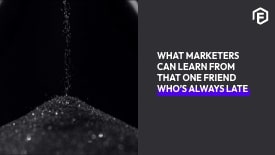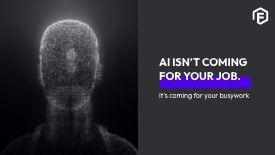There’s a rather painful truth in digital marketing: throwing money at ads doesn’t guarantee conversions. It’s a bit like shouting your crush’s name from a rooftop and expecting them to fall in love with you on the spot. You’ll get attention, sure, but love? Commitment? Sales? Not so much.
You can pump a budget into paid media, watch traffic roll in, and still see your bounce rate mock you like a smug ex. Because traffic, dear marketer, is not the same as conversion. That’s where Conversion Rate Optimisation (CRO) enters stage left – sensible shoes on, clipboard in hand – ready to sort out the chaos and give your ad spend something to live for.
What Is Paid Media (And Why It’s Just the Opening Act)?
Paid media is every form of digital advertising you pay for. Think Google Ads, paid social, display banners, programmatic placements – all the usual suspects. The appeal is obvious: it puts your brand centre stage in front of the audience you’ve stalked with alarming precision. But here’s the thing. Visibility is only the starter course. You can pay for people to show up, but unless your digital experience is doing the heavy lifting, they’ll leave faster than your oat milk flat white goes cold. Paid media gets visitors to your site. But what happens next? That fine line between “just browsing” and “take my money” is where CRO earns its keep.
CRO and Paid Media: A Match Made in Conversion Heaven
CRO is the art (and science) of turning visitors into customers. It’s not a gut instinct. It’s not vibes. It’s rigorous, data-driven tweaking based on how people actually behave on your site.
While paid media tells you where visitors are coming from, CRO tells you why they’re leaving. It shows you which parts of your site are working, which bits are confusing, and where your potential customers are silently backing away. Let’s say you’re running ads for “affordable meal delivery” and your landing page is a novella about your founder’s inspiring quinoa journey. But there’s no pricing, no meals, and no “Order Now” button in sight. Congratulations. You’ve paid to frustrate people. That click cost you money, and the user left hungry and annoyed.
CRO fixes this. It aligns your landing pages with user intent. It makes conversion easy, obvious, and far more likely. Done well, it lowers your cost per acquisition and boosts ROI. Done badly, it just leaves you with an expensive lesson in how not to run a campaign.
Where to Optimise: The Critical Zones of Conversion
Not every page on your website needs to be a high-converting machine. But certain areas are screaming for attention.
Landing pages:
The darling child of paid media. These pages should immediately communicate value, address a pain point, and serve up a compelling call to action before the user even thinks about scrolling. If your landing page doesn’t make someone want to do something – click, sign up, buy, cry tears of joy – then it’s failing.
Checkout flow:
A brutal battlefield where many a conversion dies. Users who’ve added items to their cart have essentially said, “Yes, I do.” But then you ask them to register, fill in 12 fields, verify their email, and solve a CAPTCHA that looks like an inkblot test. Suddenly, it’s a breakup.
Streamline the process. Use trust signals. Offer guest checkout. Whatever removes friction and keeps the mood alive.
Site navigation:
If users need a treasure map to find what they’re looking for, they won’t stick around. CRO pays close attention to how users move through your site: what they click, how far they scroll, and where they give up. Then it reshapes the experience to guide them, not confuse them.
Feedback Loops: The Joy of Constant Tinkering
CRO is not a one-and-done affair. It’s an ongoing relationship with your users – not the clingy type, more the quietly attentive kind who remembers how you take your coffee.
Tools like heatmaps, session recordings, and A/B testing allow you to monitor behaviour in real time. If users keep abandoning a form halfway through, maybe it’s too long. Maybe it’s too personal. Maybe it’s just plain ugly. Heck, you won’t know unless you test it.
The same goes for ad messaging. If your ad promises a “fast quote” and the landing page takes the user on an involuntary journey of self-discovery with no quote in sight, you’ve broken the contract. CRO makes sure the message matches the experience.
One Funnel, One Purpose
Think of paid media and CRO not as separate teams, but as co-conspirators. Paid media brings in the crowd. CRO ensures the crowd sticks around, feels heard, and opens their wallets. A strong performance strategy doesn’t just chase clicks. It optimises the entire funnel, from the first glance at an ad to the final tap of the “Confirm Purchase” button. And if you’re working with a limited budget, this alignment is your best weapon.
The goal is not just to attract visitors – it’s to convert intent into action. This means refining the journey, reducing confusion, and making sure every pixel of your site knows what it’s meant to do.
Final Thoughts: Don’t Just Play the Game – Win It
If you’re investing in paid media, then you’ve already stepped into the arena. But if you’re not pairing it with CRO, you’re basically swinging your sword blindfolded while yelling “trust the process”.
CRO is what makes your spend worth it. It’s what turns interest into intent and curiosity into conversions. And it never really ends. Markets shift. User habits change. What worked last month might be the reason your bounce rate is now gaslighting you.
In a noisy digital world, the brands that win are the ones that listen, adapt, and refine. Paid media gets your foot in the door. CRO helps you walk through it with confidence and maybe even charm a few customers along the way.
P.S. Don’t forget to share this article 😉
Flume is an independent, full-service digital marketing agency providing services that include SEO, web design and development, public relations, media buying, client service, UX/UI, and creative production. For more information visit www.flume.co.za or email us at [email protected] to say, well, “hello”.
-
Frequently Asked Questions
-
1. What is the difference between paid media and CRO?
- Paid media involves paid digital advertising (e.g., Google Ads, paid social) to drive traffic, while CRO focuses on optimising your website to turn that traffic into conversions through data-driven tweaks.
-
2. Why isn’t my paid media campaign driving conversions?
- Paid media brings visitors, but without CRO, your site may fail to convert due to misaligned landing pages, poor user experience, or friction points like a complicated checkout process.
-
3. Which areas of my website should I optimise for conversions?
- Focus on landing pages (to match user intent), checkout flow (to reduce abandonment), and site navigation (to ensure users can easily find what they need).
-
4. How can CRO improve my paid media ROI?
- CRO lowers cost per acquisition by optimising the user journey, ensuring ad spend leads to conversions through better landing pages, streamlined checkouts, and aligned messaging.
-
5. What tools can I use to optimise my website for conversions?
- Use heatmaps, session recordings, and A/B testing to monitor user behaviour, identify friction points, and test improvements for better conversion rates.



